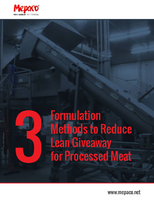Tubing and parts have cross-linked molecular structure.
Press Release Summary:
 Plastic tubing and molded parts can be treated and processed to exhibit reliability, long wear, and resistance to temperature, stress cracking, oils, petroleum, and solvents. High energy process permanently alters polymeric matrix by converting material to cross-linked PE, known as PEX. Process works on HDPE tubing and molded parts to provide in-service temperatures as high as 120°C. Treated tubing performed at 870 PSI at 80°C.
Plastic tubing and molded parts can be treated and processed to exhibit reliability, long wear, and resistance to temperature, stress cracking, oils, petroleum, and solvents. High energy process permanently alters polymeric matrix by converting material to cross-linked PE, known as PEX. Process works on HDPE tubing and molded parts to provide in-service temperatures as high as 120°C. Treated tubing performed at 870 PSI at 80°C.Original Press Release:
OEMs Replace Expensive Engineered Materials With Lower-Cost, Process-Enhanced Tubing And Molded Parts To Achieve Extraordinary Thermal Stability And Stress Cracking Resistance
Cranbury, NJ: Plastic tubing and molded parts are processed by E-BEAM Services, Inc. to create a permanently cross-linked molecular structure that exhibits outstanding performance reliability, long-wear, temperature and chemical resistant characteristics for use in automotive under-the-hood applications.
E-BEAM Services, Inc. treats plastic tubing and molded components and assemblies using an environmentally responsible high energy process that permanently alters the polymeric matrix by converting the material to a cross- linked PE, known as PEX. During the processing, high-energy electrons penetrate the product to form three-dimensional molecular "links" that deliver a wide variety of commercially desirable properties.
Automotive design engineers can use this cross-linking process on HDPE tubing and molded parts to provide in-service temperatures as high as 120°C. In comparison, untreated HDPE tubing normally withstands in-service temperatures of about 60°C.
In addition to improving performance temperatures, the process also provides increased thermal stability under load. When tested at 80°C, PEX tubing performed at 870 PSI, while un-treated HDPE tubing failed at 670 PSI.
Additional performance enhancements observed in cross-linked products include increased tensile strength; increased impact resistance; improved resistance to slow crack growth (SCG) and environmental stress crack resistance (ESCR); reduced rapid crack propagation (RCP); and improved resistance to oils, petroleum, and solvents. This allows the manufacturer to use commodity resins in place of more expensive engineered materials in certain demanding automotive applications.
The cross-linking process utilizes electron beam technology, which does not change product formulation or processing of the product. Unlike many thermochemical processing methods, which change the formulation, electron beam cross-linking is performed on the fully formed component or product.




